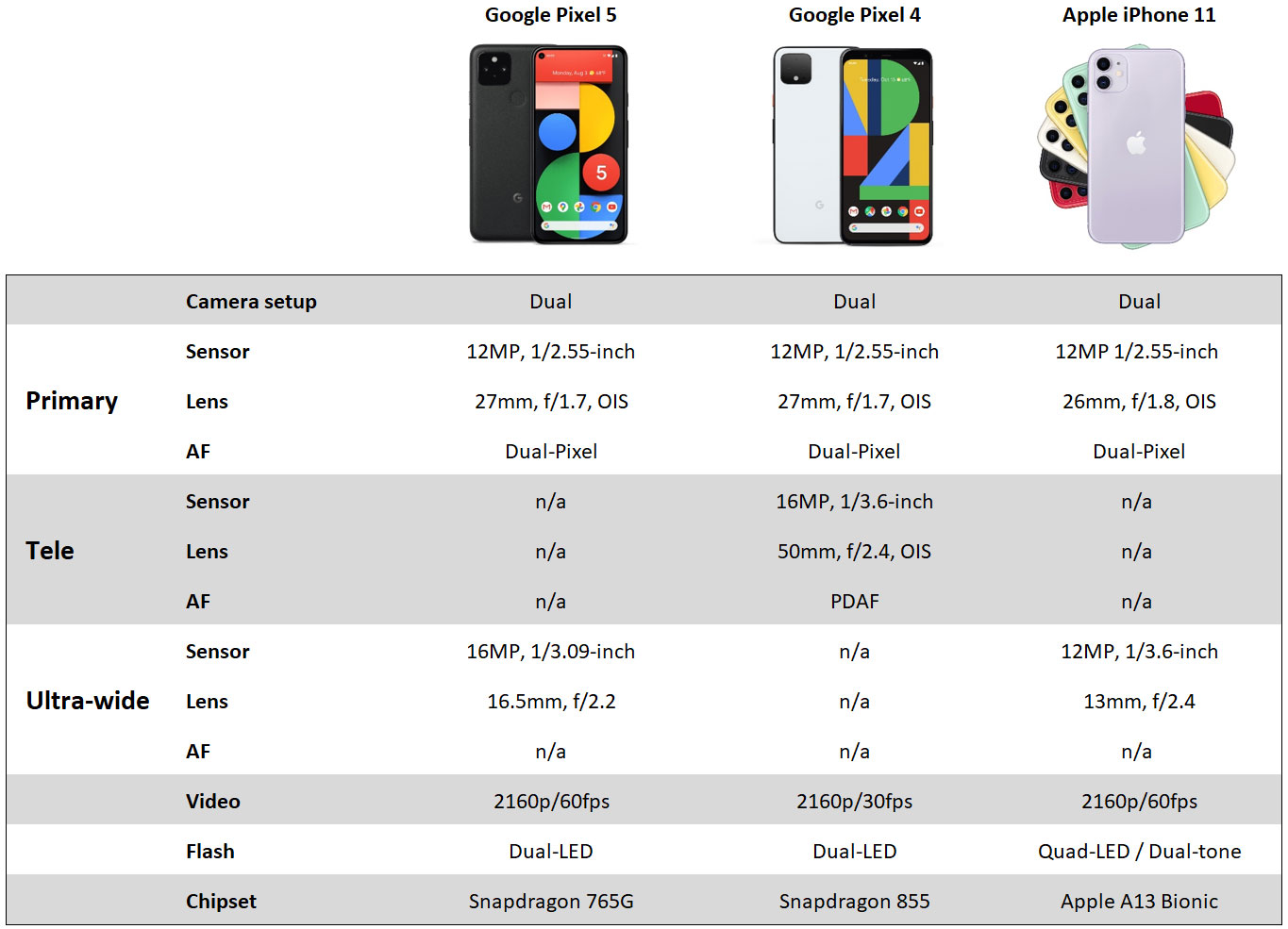Google today announced its latest smartphone, the Google Pixel 5. Unsurprisingly, the device runs the latest version of Google’s mobile operating system, Android 11, but in terms of design it’s closer to the second-tier Pixel 4a, which was launched in August this year, rather than its direct predecessor, the Pixel 4.
However, the Pixel 5 not only looks similar to the upper mid-range Pixel 4a, it’s also the first flagship-level Pixel phone not powered by Qualcomm’s top-end chipset. It uses instead the second-tier Snapdragon 765G, which should still offer plenty of processing power for even the most demanding apps. OS and apps can also rely on 8GB of RAM and 128GB of internal storage. Like on the Pixel 4, the Pixel 5’s 6-inch FullHD+ OLED display offers a 90 Hz refresh rate, and the 4,080 mAh battery is the largest we have seen in a Pixel phone to date. In addition, the device comes with wireless charging and an IP68 rating for protection against dust and water.
Looking at the spec sheet, it is clear that Google has been aiming to offer the Pixel 5 at a lower price point than its predecessors. And that’s exactly what the company is doing: at a $699 starting price, the Pixel 5 is the most affordable Pixel phone we have seen in a long time and quite a lot cheaper than the flagship phones from Apple, Samsung, Huawei, and other major manufacturers.
Google’s unwillingness to compete with those brands in terms of high-end hardware is also visible in the camera department. On the front, a 8MP single module does the selfie work, while on the back the Pixel 5 retains a dual-camera setup for its main shooter. However, while the Pixel 4 added a dedicated tele-camera to the main module, the Pixel 5 Google offers an ultra-wide but no tele. Let’s have a closer look at the Pixel 5 camera.
Camera: Ultra-wide instead of tele
As mentioned above, the major change between the Pixel 4 and the Pixel 5 in terms of camera hardware is the change from a dedicated tele-camera to an ultra-wide-angle. It looks like Google thinks most users will prefer the latter. (In reality, what users prefer largely depends on their shooting style and subjects.) In video mode, users can now shoot 4K video at 60 frames per second, which should be welcome news for those who have a need for the high resolution and increased frame rate, and Google says it has also improved video stabilization for smooth panning and a more cinematic effect.

Primary camera
The hardware specifications of the primary camera have not changed on the new model, so any potential improvements in terms of image quality would very likely come down to software, such as the improved HDR+. Compared to some Chinese flagship phones, such as the Huawei P40 Pro or the Xiaomi Mi 10 Ultra, the Pixel 5’s 1/2.55-inch sensor is fairly small. We saw quite a lot of shadow noise on the Pixel 4 in our testing and sensor size was likely a contributing factor.
This said, the sensor in the Pixel 5’s main camera is the same size as in more comparable devices, such as the iPhone 11, and Google is known for being at the forefront of image processing, so there is a good chance image noise is better controlled on the latest model than it was on the Pixel 4.
The lack of a dedicated tele-lens likely means that users will have to accept lower levels of image detail in Pixel 5 images captured at zoom settings than on the Pixel 4. Thanks to their excellent Super Resolution algorithms, Google engineers have been able to squeeze impressive zoom quality out of previous single-lens models, but it will still be very difficult to compete with tele-equipped models.
The lack of a tele-lens and a time-of-flight sensor also means that the Pixel 5 relies only on the wide and ultra-wide lenses for depth estimation and creating a simulated lens bokeh in portrait mode, which means the quality of depth estimation is likely lower than on devices that have more ways of capturing depth data.
Ultra-wide
On the upside, the new model now comes with an ultra-wide camera. At 16.5mm, the angle of view is not as wide as on some other models (for example, 13mm on the iPhone 11), and the 1/3.09-inch sensor is again pretty small when compared to offerings from companies like Huawei and Samsung. However, the Pixel 5 now offers Google’s Night Sight night mode when shooting in portrait mode which should help improve portrait shots in low light. We’ll have to wait and see what Night Sight and Google’s other image processing algorithms can do with the image data captured by the sensor.
Hardware is not everything
Looking at the camera hardware alone, it’s fair to say the Pixel 5 offers decent specs, but the dual-camera setup and processor are not on the same level as current flagships from the competition. However, this is reflected in the phone’s price, which is a good deal lower than most 2020 flagships. It’s also worth mentioning that while camera hardware is important, software is a major contributor to image quality, too. And software is obviously where Google’s expertise is. With algorithms like HDR+ and Super Resolution, the company has been able to squeeze the most out of limited imaging hardware for years, so we’d expect the Pixel 5 to do the same and deliver very good overall image quality for its price segment.
We’ll know more when the full review is ready, which should hopefully be soon. For those who want to use and shoot with the new phone as soon as possible, the Pixel 5 is available for pre-order from today.


DXOMARK encourages its readers to share comments on the articles. To read or post comments, Disqus cookies are required. Change your Cookies Preferences and read more about our Comment Policy.